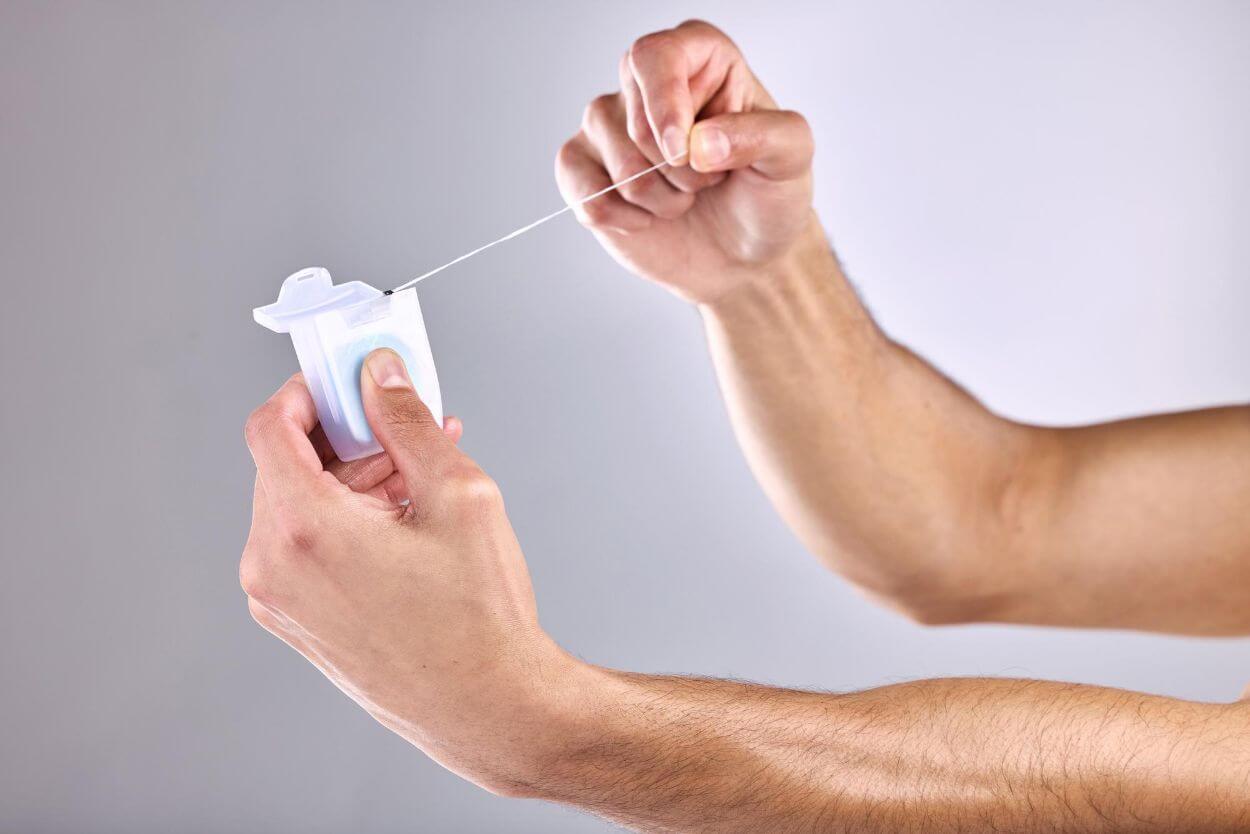Table of Contents
ToggleDental Floss: Flossing Teeth Properly
Keeping your teeth clean is very important for a healthy smile. One very important tool or device that you should always include in your dental hygiene kit is a dental floss. Lets learn how to floss teeth properly, to get the best oral health.
Why Dental Floss Matters
Dental floss is more than just a small string. See it as your secret weapon against cavities and gum infection. While your toothbrush can clean the surfaces of your teeth, it can’t reach the tight spaces between them. That’s where dental floss comes in.
By removing particles of food and dental plaque buildup from between your teeth, flossing help to prevent cavities, gum inflammation, and bad breath.
Choosing the Correct Dental Floss
When it comes to dental floss, variety is key. Dental floss comes totally different thicknesses, textures, and flavors.
- If you have tight spaces between your teeth, try going in for a thin, waxed floss that can easily slide between them.
- If you have wider gaps between your teeth, go for a thicker, tear-resistant or durable floss as these might be more effective. Experiment with different types of floss to find the one that works best for you.
Tips:
- Search for dental floss that carries the American Dental Affiliation (ADA) Seal of Acknowledgment.
- Consider trying waxed floss if you have tight spaces between your teeth, as it glides more smoothly.
Getting Started with Dental Floss
Now that you’ve chosen your dental floss, it’s time to get started.
- Cut a bit of floss around 18 inches long. This might seem like a lot, but you’ll need enough to use a fresh section between each tooth
- Wrap each end of the floss around your middle fingers, leaving a few inches in between.
- Hold the floss tightly between your thumbs and index fingers, leaving just a small area to work with.
Tips:
- Use a mirror to help you see what you’re doing, especially if you’re new to flossing.
- Don’t forget to floss behind your back teeth, where plaque often accumulates.
How to Floss Your Teeth
Once as you have your floss ready, it’s time to start flossing.
- Gently guide and direct the floss between your teeth, try to be careful not to snap or force it .
- Curve it into a C-shape to hug the side of each tooth, then use a gentle back-and-forth motion to work the floss between each tooth
- Be sure to floss both sides of every tooth, including the back of your last teeth where plaque often hides..
Tip:
- Take your time and be gentle to avoid hurting your gums.
- If you have braces or other dental appliances like dental implants, use a floss threader to navigate around them.
Tips for Successful Flossing
- Flossing once a day is perfect, but in case you’re new to flossing, try starting by flossing a few times a week and work your way up.
- Take your time to floss properly/correctly, spending a few seconds on each tooth. In case you’re having troubles reaching certain areas of your teeth, trying using a toothpick or an interdental brush to reach these areas.
- And do not forget to flush your mouth with water after flossing to wash away any released plaque or debris.
Tips:
- Set a reminder on your phone or calendar to help you remember to floss every day.
- If you’re traveling, don’t forget to pack travel-sized dental floss to maintain your oral hygiene routine no matter where you are.
Common Flossing Issues
In case you notice bleeding while flossing, don’t panic.This is actually common. With consistent flossing, the bleeding should improve and till some extent stop, as your gums become healthier.
However, If you continue to experience bleeding or discomfort after a while (Keeping in mind that you are flossing properly), consult your dentist, or contact us trough the chatbot or by filling the form, and we will have a well trained, and qualified dentist or periodontist to give you relevant advice. Keep in mind that flossing shouldn’t hurt – in case it does, you may be flossing too aggressively.
Tip:
- If traditional flossing is difficult for you, then you should consider using toothpicks or water flossers as alternative options.
- Do not forget to schedule regular dental check-ups and cleanings to preserve and maintain your oral health.
Conclusion
To conlude, flossing is a simple but very effective way to improve your oral health. You can prevent cavities, gum diseases and other future oral problems just by simply flossing at least 3 times a week to remove plaque and food debris from between your teeth. Also with the right technique and consistency, flossing can help you maintain a bright and healthy smile for years to come. So don’t forget to floss – your teeth will thank you!
If you need more information or if you have any other questions, please visit our FAQ page


